【Written before the trip】
Beijing is a place I have longed to visit since I was a child.
I go to college in Tianjin, and I visit Beijing almost every holiday. I also spent Christmas in Beijing. I have visited almost all the attractions in Beijing, big and small, but I still love the cultural atmosphere of Beijing. I never get tired of it!
I wish I could celebrate the 600th anniversary of the Forbidden City in my lifetime. I started looking forward to it a few years ago, from Director Shan Jixiang to Director Wang Xudong. However, due to the epidemic, the originally scheduled monthly special exhibitions were cancelled, and of course I couldn’t see "Along the River During the Qingming Festival"~
Fortunately, the epidemic situation improved in September this year, and the special exhibition of the 600th anniversary of the Forbidden City - Danchen Yonggu opened~
I made an appointment with my friends and walked into the Forbidden City for the fourth time~

【Transportation】
Harbin-Beijing October 29, 2020 Z18 21:33—07:52
Beijing-Harbin November 2, 2020 CZ8964 19:00—21:15
[Accommodation]
Piao HOME (Building 23, Xinghuadongli, Dongcheng District)


This hotel is located in a residential area, very quiet, close to the subway, and there are large supermarkets around, which is very convenient.
【Expense】
A total of 2,500 yuan for food, drinks and entertainment
【Itinerary】
Day 1 [October 30] Forbidden City - Guijie Street (Hu Da Restaurant)
Day 2 [October 31] National Museum - Dongjiaominxiang - Four Seasons Minfu Roast Duck
Day 3 [November 1] Lama Temple (Seven Searches and Eight Turns) - Old Summer Palace - Shichahai
Day 4 [November 2] Wangfujing and Heping Fruit Shop - Hamleys Toy Store - —Pop Mart Store——Lego Toy Store
Day 1 [October 30] Forbidden City——Guijie Street (Hu Da Restaurant)
I took the train all night last night and didn’t sleep well. I got off the train in the morning, had breakfast at McDonald’s, and then took the subway to the Forbidden City. The security check is very strict now. It was almost 10 o’clock before I entered Tiananmen Square. The tickets I booked in advance on the Forbidden City’s official website needed to be activated. The Forbidden City now has a daily limit on the number of people. Tickets must be booked online at least 10 days in advance. You will definitely not be able to buy them on the day. I saw many people returning disappointed on the spot! The Danchen Yonggu exhibition is free. We bought tickets for the Forbidden City, the Treasure House, and the Clock and Watch Museum for a total of 80 yuan (peak season), which is quite affordable compared to other tourist attractions nationwide. The Forbidden City in Beijing, once the imperial palace of the Ming and Qing dynasties, is located at the center of Beijing's Central Axis and is a quintessential example of ancient Chinese palace architecture. It is one of the largest and best-preserved wooden structures in the world. The Forbidden City in Beijing is known as the first of the five largest palaces in the world (the Forbidden City in Beijing, the Palace of Versailles in France, Buckingham Palace in the United Kingdom, the White House in the United States, and the Kremlin in Russia).
















In the cultural and creative store, I opened the auspicious beast blind box with my friends.







There are many young girls in Qing Dynasty costumes taking photos in the Forbidden City, which is also a beautiful scene~




Unit 1: Palace and City as One
The space, painted in off-white, highlights the three-dimensional effect of Ming Dynasty stone components. Exhibited with numerous illustrations and calligraphy and paintings, the exhibition explores the concepts and construction techniques of Ming Dynasty palace construction. Through three historical milestones, it depicts the beginning and completion of the construction of the Beijing Imperial Palace, as well as the changes in the layout of the Forbidden City during the Ming Dynasty.



The use of red accents highlights the splendor and exquisiteness of the Forbidden City's palace architecture and interior decorations during the Qing Dynasty, while also depicting the evolving architectural layout and style of the Forbidden City throughout the Qing Dynasty. Through eight historical milestones, the exhibition explores how ten Qing emperors renovated or remodeled the Forbidden City's buildings to meet their administrative needs, such as as residences and sleeping quarters, ultimately shaping the Forbidden City's present-day structure. The exhibits showcase the cultural integration of ancient China's multi-ethnic communities and the ingenuity of the working people. This unit is the most gorgeous, and the places where people are crowded must be the treasures~


Sable fur, gold phoenix, and jewel-inlaid empress's winter crown, worn by the empress of the Qing Dynasty during her wedding.




Bright yellow satin embroidered vine pattern jacket

White jade bowl with extravagant mouth

Green jade with interlaced dragon knob and inscription "Xianfeng Imperial Calligraphy Treasure"



 This screen window was originally used in Emperor Qianlong's retirement residence. The front and back sides feature the same pattern, totaling 11 layers, the thickness of paper. It allows light to pass through. Many of the techniques used in screen windows at the Forbidden City remain undeciphered, and this artifact, upon its first exhibition, risks becoming a masterpiece, never to be exhibited again.
This screen window was originally used in Emperor Qianlong's retirement residence. The front and back sides feature the same pattern, totaling 11 layers, the thickness of paper. It allows light to pass through. Many of the techniques used in screen windows at the Forbidden City remain undeciphered, and this artifact, upon its first exhibition, risks becoming a masterpiece, never to be exhibited again.

The western room of Fuwang Pavilion features a rosewood frame and inlaid kang edge. Even the kang edge is so exquisite. I lay there staring at it for a long time~



A rosewood frame with a gilded copper kang edge in the east room of Fuwang Pavilion

A plaque inscribed with the words "Diligence in Government and Respect for the Wise" written by Emperor Yongzheng




You can tell it’s from the Yongzheng period by looking at the color~





Forbidden City ridge beasts




The use of green in the exhibition space symbolizes the vibrant and prosperous development of the Palace Museum since its founding. Through seven historical moments, the exhibition recounts events such as the southward relocation of the Palace Museum's cultural relics and the surveying of the Central Axis architecture after the former imperial palace became a museum. Numerous old photographs, historical archives, and exhibits showcase the Palace Museum's achievements and development since its founding.


The earliest Forbidden City calendar
As you walk down from the Meridian Gate, you can see a popsicle vendor. Buy two and take photos.


















These bonsai are truly exquisite.































I came out at around 4pm, feeling hungry, but I couldn't miss the sunset over the corner tower.



In the evening, I went to Hu Da on Guijie Street to eat crayfish. The crayfish was average, but the spicy chicken was amazing. You have to go to Hu Da early or you will have to wait in line.

/>




The next day [October 31st] National Museum - Dongjiaominxiang - Four Seasons Minfu Roast Duck
I have a very deep connection with the National Museum. When I was in college, the National Museum was under renovation. It reopened the year I graduated. Unfortunately, it was the 90th anniversary of the founding of the Communist Party of China that year, and there were all red exhibitions. When I went to Beijing again, it was closed. This time I finally checked and found that the National Museum was operating normally. Finally, I got to see the National Museum ten years after graduation~


The museum spans five floors and contains 48 exhibition halls. The exhibition area is very large, and the number of exhibits is impressive. A thorough exploration of the entire National Museum will take at least a day, with a focus on the "Ancient China" section and the bronze exhibition.

"Ancient China": A Journey Through Thousands of Years
After entering the museum, head straight to the "Ancient China" exhibition hall on the basement level. The exhibits here are arranged chronologically from ancient times to the Ming and Qing dynasties, resembling a comprehensive history of China. When visiting, remember to enter through the entrance of the prologue hall on the north side of the exhibition hall. This way, you'll be able to explore the site in chronological order, starting from ancient times. Otherwise, you'll end up "traveling back in time" from the Ming and Qing dynasties. Even if you're not familiar with cultural relics, you'll undoubtedly see many familiar artifacts here, such as a painted pottery basin with a human face and fish pattern, a Yangshao eagle-shaped pottery tripod, a Hongshan culture jade dragon, a pottery figurine with drums and raps, a Shang Dynasty Four-Sheep Square Tripod, painted terracotta warriors and horses from the Western Han Dynasty, a Chenghua Doucai jar, and the Phoenix Crown of the Empress Dowager Wanli of the Ming Dynasty. Their exquisiteness represents the essence of Chinese civilization and is truly a feast for the eyes. Bronze Exhibition: Experiencing the Bronze Age After exiting "Ancient China," take the elevator to the "Ancient Chinese Bronze Art" exhibition hall, located in the central lobby on the third floor. The bronze tripods in the exhibition are another highlight of the museum, especially the Simuwu Ding, the round Zilong Ding, and the Dayu Ding, with nearly 300 characters on its inner wall. These are all rich and exquisite, representing the finest works of my country's Bronze Age.



The Houmuwu Ding (Shang Dynasty) needs no further introduction. It is well-known. src="https://dimg04.c-ctrip.com/images/0105m120008ekp1m95644_W_671_0_Q90.jpg?proc=autoorient" />



“Fuhao” bronze figurine square Yi (Shang Dynasty), unearthed from the famous Fuhao Tomb at Yinxu, Anyang


"Fuhao" Bronze Owl Zun

Jade Dragon

Jade Phoenix

Bronze gui lid (Zhou Dynasty)

Bronze mask (Shang Dynasty), unearthed from Sanxingdui


Bronze Human Head


Four-Ram Square Tripod (Shang Dynasty) src="https://dimg04.c-ctrip.com/images/0105k120008ekph1251BA_W_671_0_Q90.jpg?proc=autoorient" />




Painted Bronze Gang Lamp with Goose and Fish (Western Han Dynasty)
A "gang" refers to a smoke-conducting tube, and a "gang lamp" is a lamp with a smoke-conducting tube. It was a newly invented lamp during the Han Dynasty.
This "gang lamp" is designed to resemble a standing wild goose, looking back and holding a fish. It is composed of four separate parts: the goose's body, the lamp plate, and the lampshade. The goose has a slender neck, looking back and holding a fish. The goose is plump, with wings cast on either side, a short, upturned tail, and two legs standing side by side. The lamp plate, with a handle, is located on the goose's back. The lampshade consists of two curved panels. The lamp panel and lampshade can be rotated to adjust wind protection and lighting. The fish body, goose neck and goose body are hollow and connected to each other to absorb smoke and dust. Each part can be disassembled for easy cleaning. The concept and design are exquisite and reasonable, achieving a perfect unity of function and form. It is a rare artistic treasure. Bronze Rhinoceros Zun with Inlaid Gold and Silver Cloud Patterns (Western Han Dynasty) This bronze zun features a rhinoceros, standing with its head held high, muscular, well-proportioned, and powerful figure. It evokes the Sumatran rhinoceros, a species that inhabited China in ancient times. This zun is shaped like a rhinoceros, with its head held high, a plump body, short, thick legs, thick, wrinkled hide, pointed horns, and eyes inlaid with black beads. The zun's hollow belly was used to hold wine. The back of the zun features an oval mouth with a lid. A circular, tubular "spout" flanks the right side of the mouth. In ancient China, rhinoceroses were not only native to China, but also plentiful. Rhino bones have been found numerous times at Neolithic sites. Oracle bone inscriptions from the Shang Dynasty record the burning of forests to hunt rhinos. During the Spring and Autumn Period and the Warring States Period, rhino armor crafted from rhino hide was a coveted piece of armor for warriors. Due to widespread hunting, this low-reproductive wild animal rapidly declined in northern China, becoming extinct in the Guanzhong region by the late Western Han Dynasty.


Brick depicting a performance of a female prostitute (Eastern Han Dynasty)



Gold Seal of the King of Dian (Western Han Dynasty)


Bronze spear with hanging figure (Western Han Dynasty), quite ethnic, it is a bronze weapon used for ceremonial by the Dian people.

Cowhide boots (Western Han Dynasty), unearthed from the Loulan Ruins in Lop Nur, Xinjiang. src="https://dimg04.c-ctrip.com/images/01017120008ekvcwr74DB_W_671_0_Q90.jpg?proc=autoorient" />

Qian Liu Iron Coupon (Tang Dynasty)
Qian Liu (Liú) Iron Coupon was a gold book and iron coupon given by Emperor Zhaozong of the Tang Dynasty to reward Qian Liu, Prince of Pengcheng County, for quelling Dong Chang's rebellion against the Tang Dynasty and proclaiming himself emperor. Qian Liu (Liú) was the founding king of the Wuyue Kingdom in the Five Dynasties. In the third year of Qianning in the Tang Dynasty (AD 896), Dong Chang rebelled against the Tang Dynasty and proclaimed himself emperor. After trying to persuade him to surrender to no avail, Qian Liu pacified Dong Chang. Emperor Zhaozong of the Tang Dynasty named Qian Liu the envoy of Zhenhai and Zhendong Jiedushi. In the fourth year of Tang Qianning's reign (AD 897), Emperor Zhaozong of the Tang Dynasty granted him a "Golden Book and Iron Coupon" with 333 gold characters embedded in regular script (commonly known as a gold medal for immunity from death): "... Your Majesty will be spared nine deaths, and your descendants will be exempted from three deaths. If you are guilty of regular punishment, you will not be punished by the official..."
The world vividly calls this iron coupon "the immunity card" and "the life and death card".









Queen Xiaoduan's phoenix crown (Wanli, Ming Dynasty) was unearthed from the Thirteen Tombs of the Ming Dynasty - Dingling

Huang Taiji mobilizes troops to send troops to Xinpai Qing

Old Summer Palace Shop in the Late Qing Dynasty



"Emperor's Treasure" Jade Seal (Qing Dynasty) One of the twenty-five treasures designated by Qianlong

Dalong stamps were the earliest stamps issued in China in 1878

The Collection of Cleansing Wrongs, written by Song Ci of the Southern Song Dynasty
my country's first forensic medicine work, 300 years earlier than Europe

Mengxi’s written talk about the Northern Song Dynasty written by Shen Kuo

Nine Chapters of Mathematics by Qin Jiushao of the Southern Song Dynasty

The Romance of the Three Kingdoms by Ming Luo Guanzhong

Tiangong Kaiwu by Yingxing of the Ming and Song Dynasties

Bitter Cold Post from Lu Youshu of the Southern Song Dynasty

Yongle Dadianming

Nandou Fanhui Tuming
The National Museum is so big that after walking around it, my feet will almost become useless. I want to go shopping in the nearby Dongjiaomin Alley
Dongjiaomin Alley is nearly 1.6 kilometers long and is the longest alley in old Beijing. After 1860, it became the embassy area, with embassies, foreign banks, post offices, hospitals, etc. from various countries stationed there.


The alley is quite quiet, and we also rode bicycles






I bought Aunt Long’s beef biscuits on the roadside

In the evening, a family of college classmates came to treat us to roast duck and chat about their college days. I really felt that ten years have passed by so quickly






The third day [November 1st] Yonghe Temple (Qixun Baguai Hutong cuisine) - Old Summer Palace - Shichahai
Go to Yonghe Temple early this morning (free ticket 25 yuan) Burning incense, the Lama Temple is a rare royal temple of the Gelug Sect (Yellow Sect) of Tibetan Buddhism in Beijing. Historically, it was the residence of the fourth son of the Qing Emperor Yinzhen (Emperor Yongzheng) and the birthplace of Emperor Qianlong. Later it was changed into a Yellow Sect temple, which is very popular. There are many precious ancient buildings and cultural relics in the temple, which are worth visiting.











There are numerous Buddha statues, thangkas and a large number of precious cultural relics in each hall of the temple. Among them, the Five Hundred Arhats carved from rosewood, the giant Buddha niche with dragons carved from golden nanmu, and the 18-meter-high white sandalwood Buddha are the three wonders of the wood carving craftsmanship of the Lama Temple. Among the three wonders, the Maitreya Buddha in Wanfu Pavilion is extremely famous. It is 18 meters above the ground and buried 8 meters underground. It is carved from a complete white sandalwood tree. This tree originated in Nepal and was later dedicated to Emperor Qianlong









The persimmon trees in the temple are ripe




There are also ginkgo trees on the road to the Lama Temple. The autumn in Beijing is so beautiful
At noon, we had dinner at a small restaurant in the Xilou Hutong and ordered the special chicken dumplings, which are sweet and sour shrimps and chicken







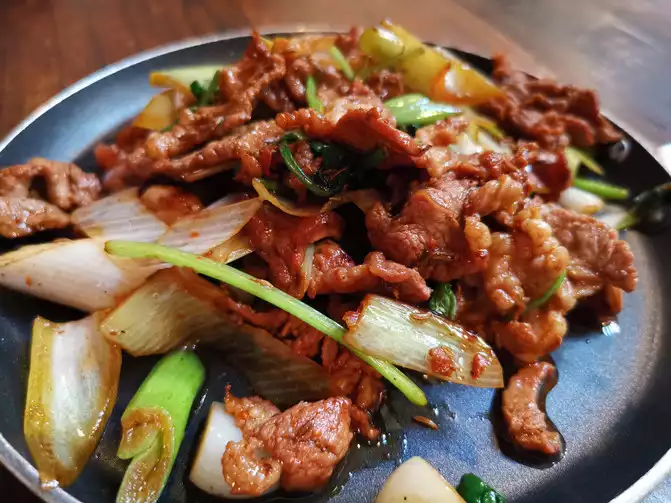
We arranged to go to the Old Summer Palace in the afternoon. Tickets reserved in advance are 25 yuan.
The Old Summer Palace is a famous royal garden in the Qing Dynasty. It consists of three areas: the Old Summer Palace, the Changchun Garden and the Qichun Garden. It is extremely beautiful and beautiful in history and has the reputation of "the Garden of Ten Thousand Gardens".
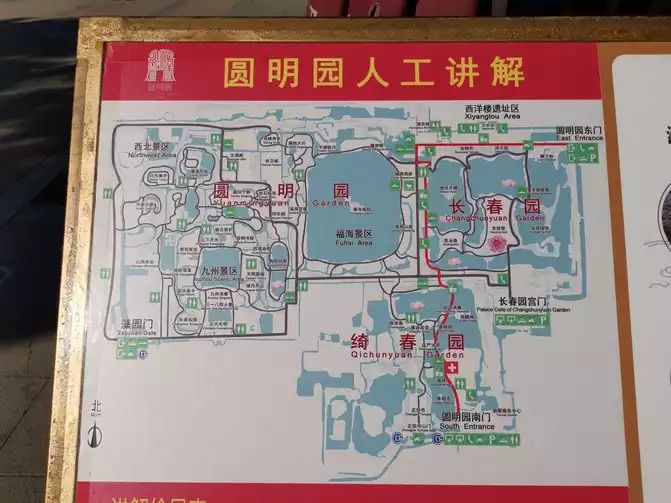
Old Summer Palace was built in 1709 (the 48th year of Kangxi reign). It was a garden given by Kangxi to Yongzheng, who had not yet ascended the throne, to spend his free time. After Yongzheng ascended the throne in 1722, he expanded the original gift garden and built the Zhengda Guangming Hall, Qinzheng Hall, and storage rooms for the Cabinet, Six Ministries, and Military Aircraft Department in the south of the garden to "avoid the noise and listen to politics." During the Qianlong period, the Old Summer Palace underwent partial additions and reconstructions. Changchun Garden was built to the east, and Wanchun Garden was merged into the southeastern neighbor. The pattern of the three Old Summer Palaces was basically formed. During the Jiaqing period, Qichun Garden was repaired and expanded and became one of the main garden residence places.
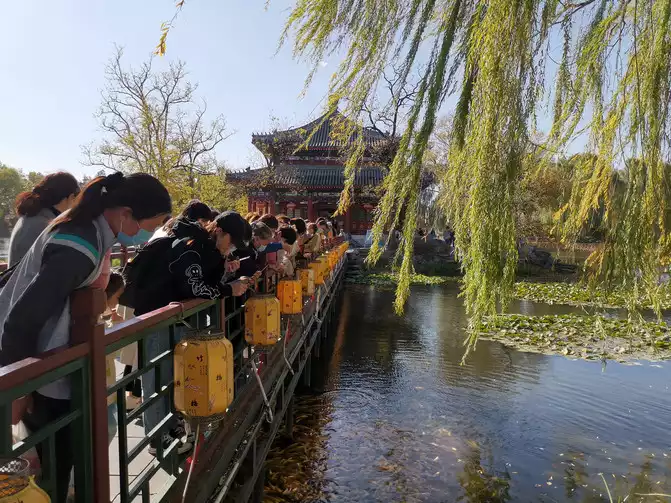
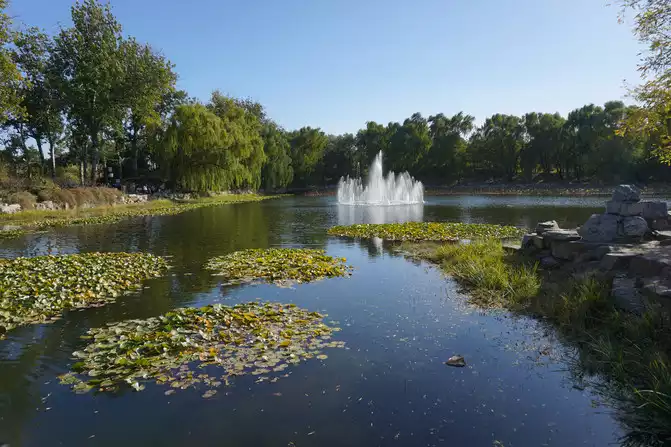
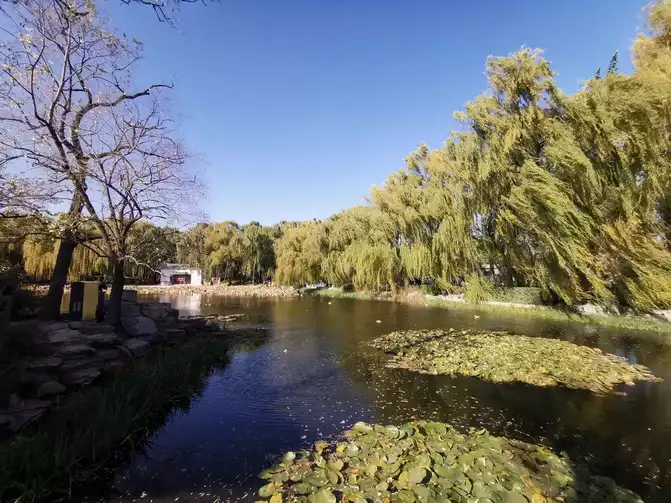
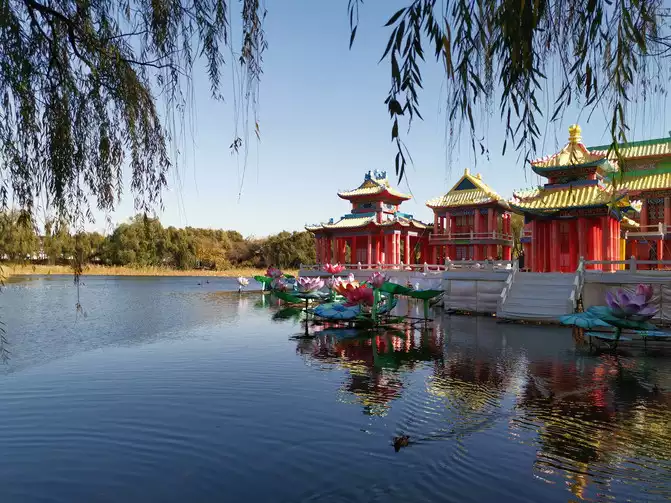
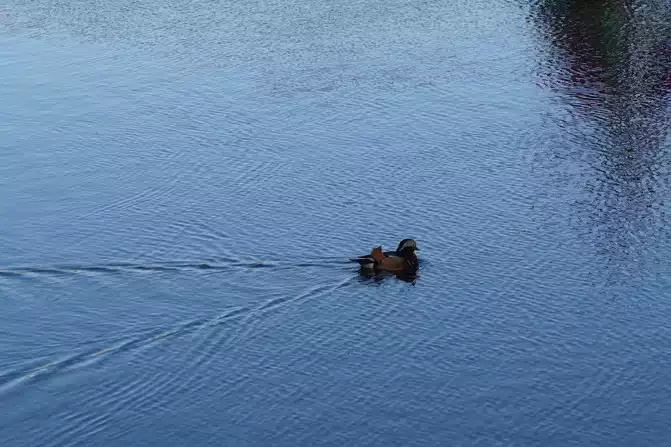
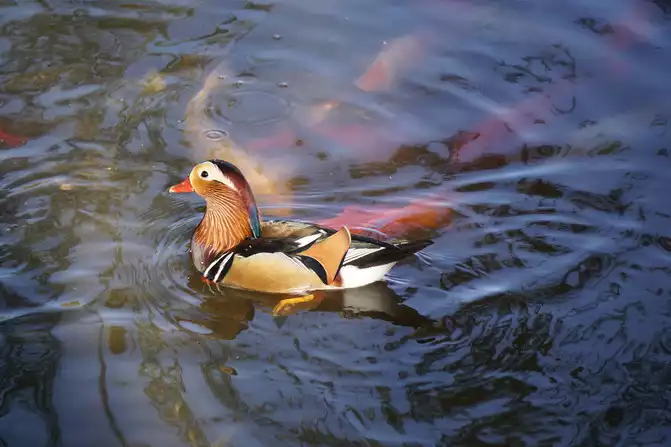
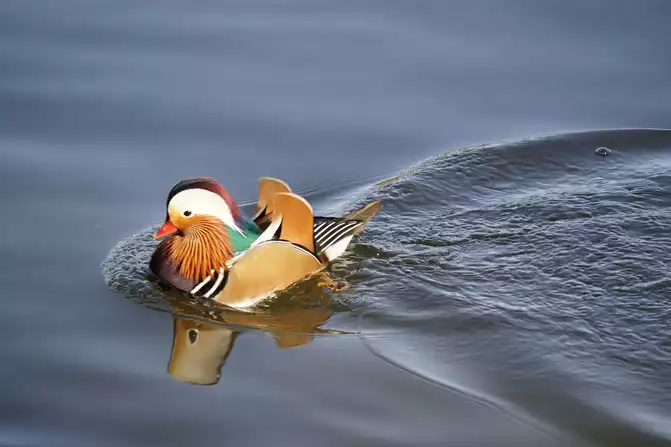
There is a section of Ginkgo Avenue from the gate of Yuanmingyuan to Xiyang Building, and there are many people taking photos
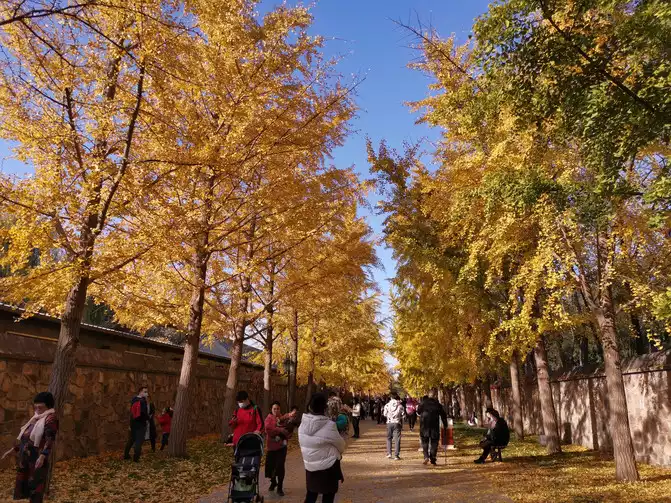
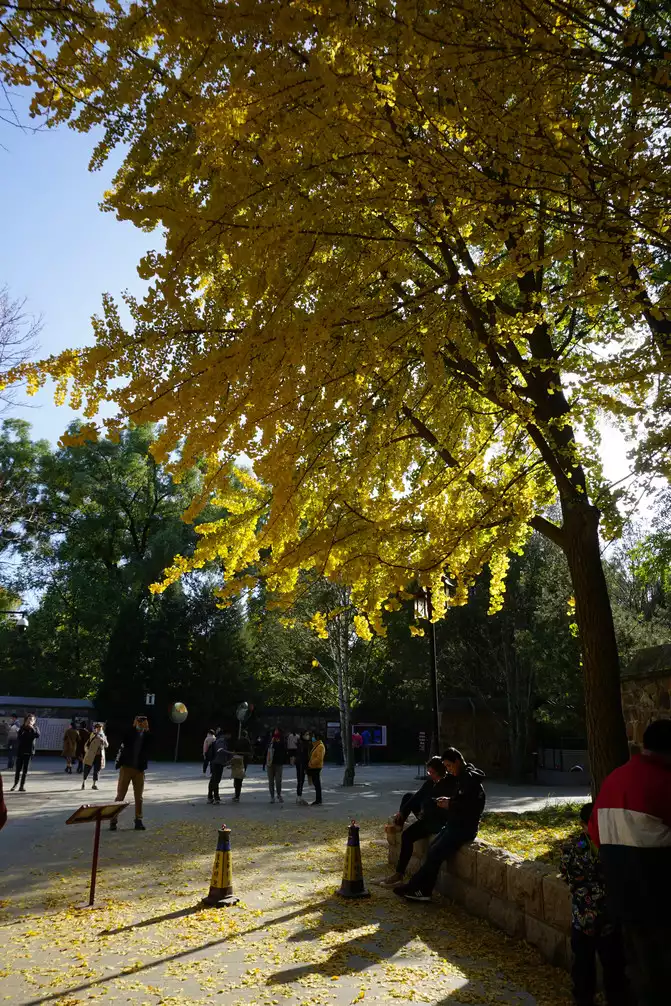
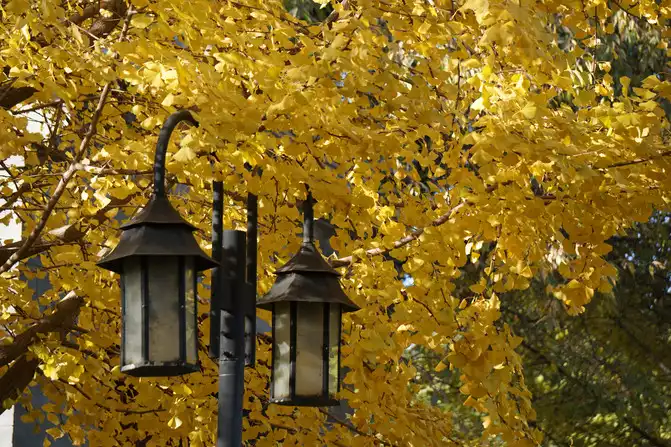

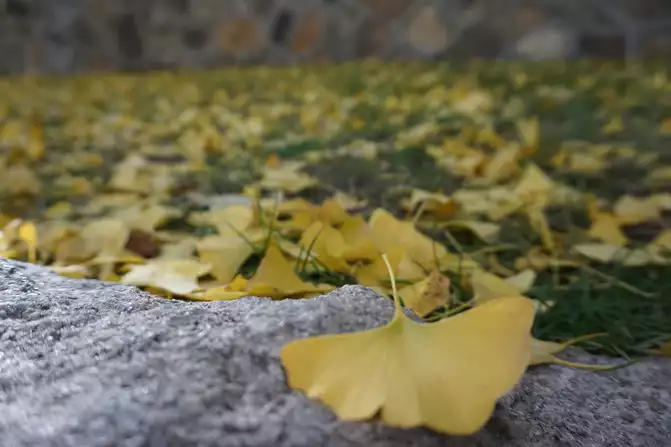
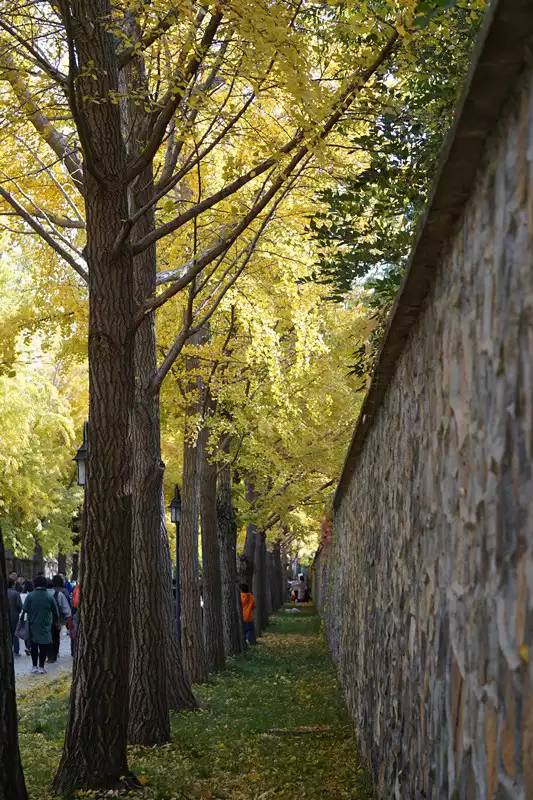

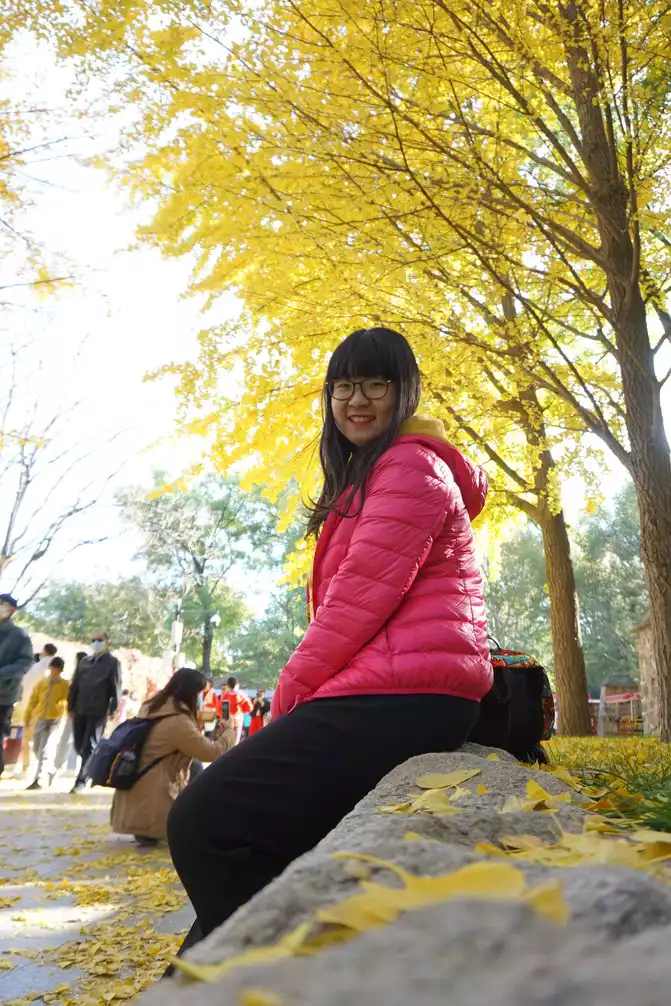
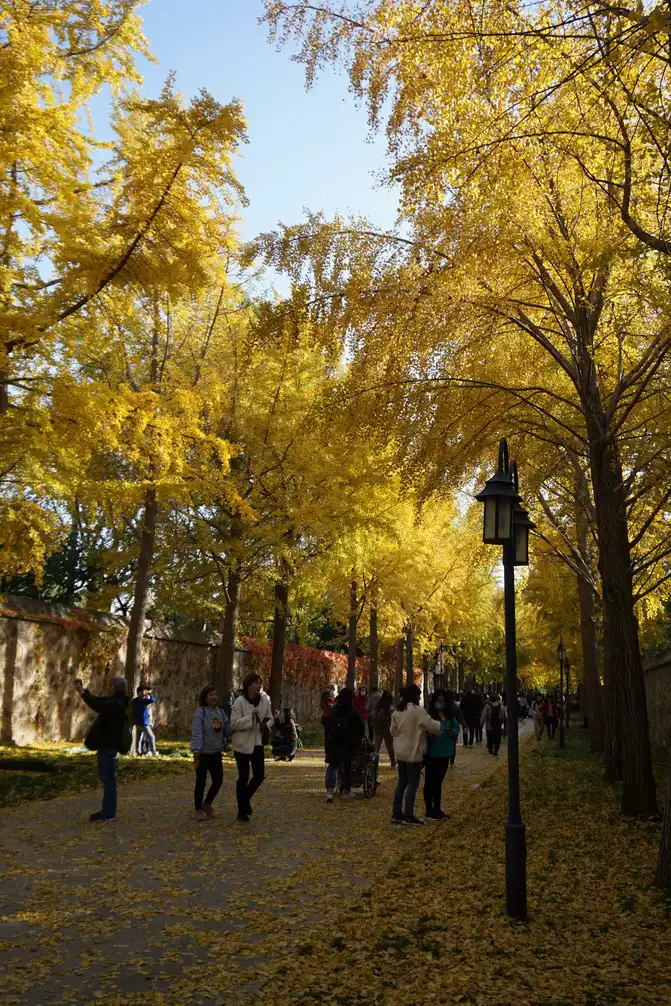
The Old Summer Palace was burned down by the British and French forces in 1860. A rough estimate of the number of cultural relics looted was about 1.5 million, ranging from bronze ritual vessels from the pre-Qin era to calligraphy and paintings by famous people and various rare treasures from the Tang, Song, Yuan, Ming and Qing dynasties. In 1900, the Eight-Power Allied Forces invaded Beijing, and the imperial gardens in the western suburbs suffered another disaster.
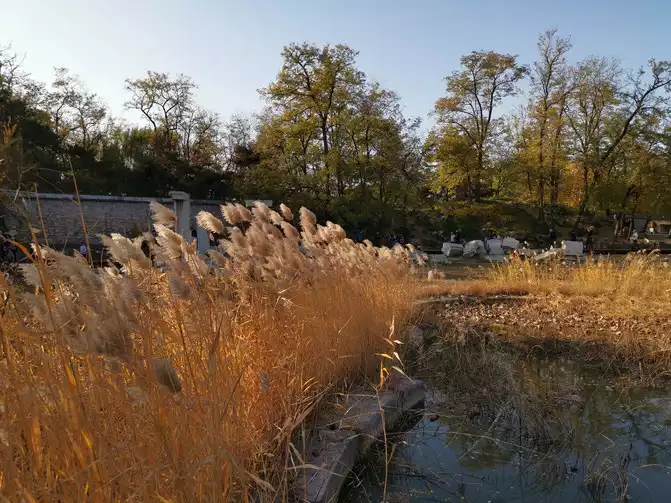
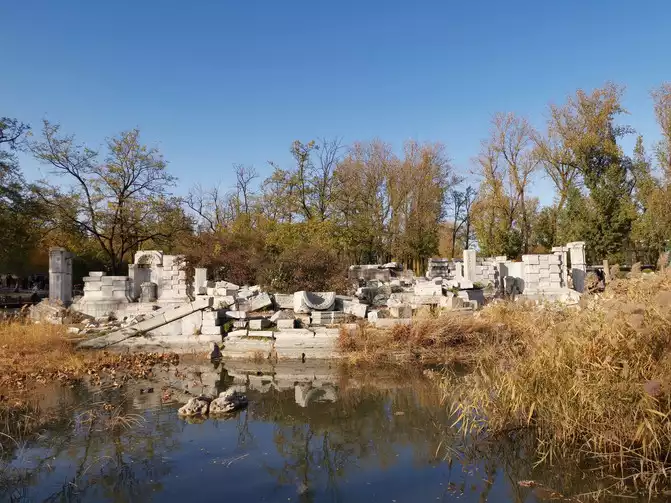
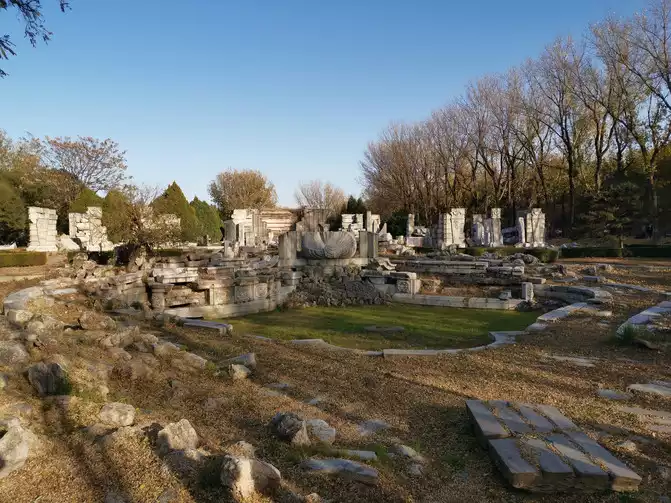
The Western-style Building is located in the northern boundary of Changchun Garden. It is the first European-style garden imitated in my country. It consists of more than ten Western-style buildings and courtyards, including the Xieqiqu, Yellow Flower Array, Bird Cage, Square Appearance, Haiyantang, Yuanyingguan, Dashuifa, Guanshuifa, Xianfashan, and Xianfahua. The building materials are mostly white marble, with finely carved stone surfaces and glazed tiles on the roof. It covers an area of about 7 hectares.
The Western-style Building was designed and supervised by the Western missionary Italian Castiglione and the French Jesuit missionary Chiang Youren who worked at the Ruyi Pavilion of the Palace Painting Academy at that time, and was built by Chinese craftsmen
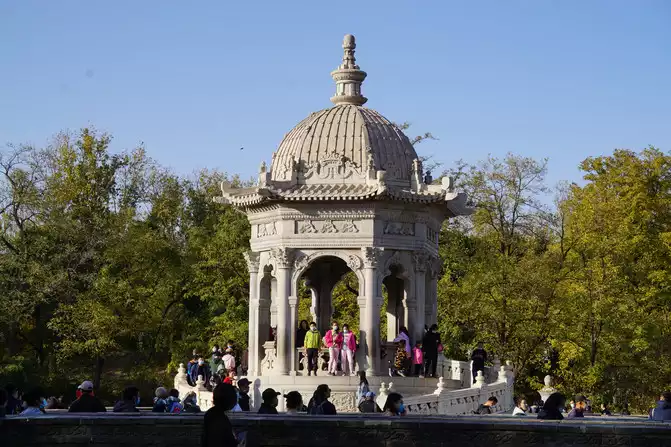
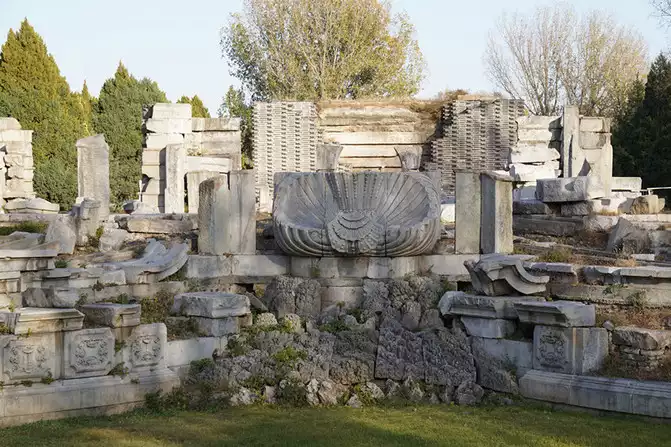
Haiyan Hall, the word "Haiyan" means "the river is clear and the sea is peaceful, the country is peaceful and the people are safe". On the left and right sides of the pool, there are bronze statues of human bodies and animal heads of the twelve Chinese zodiac signs (bronze statues of animal heads in Yuanmingyuan) arranged in the shape of "eight". At twelve hours every day and night, the twelve zodiac signs take turns spraying water. At noon, the twelve bronze statues spray spring water from their mouths at the same time. These bronze statues were designed by Westerners and made in China. They integrate Eastern and Western cultures and are commonly known as "water clocks."
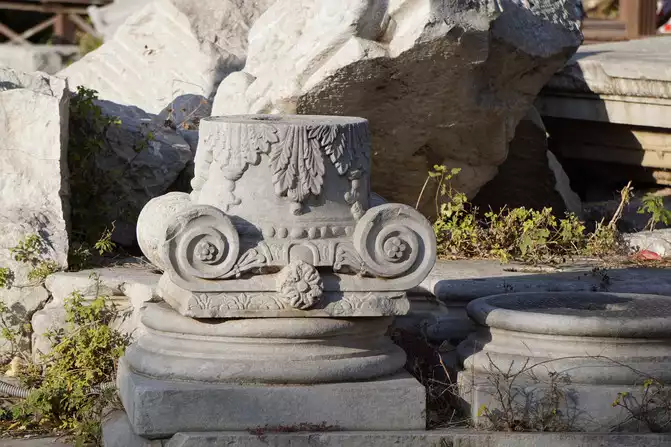
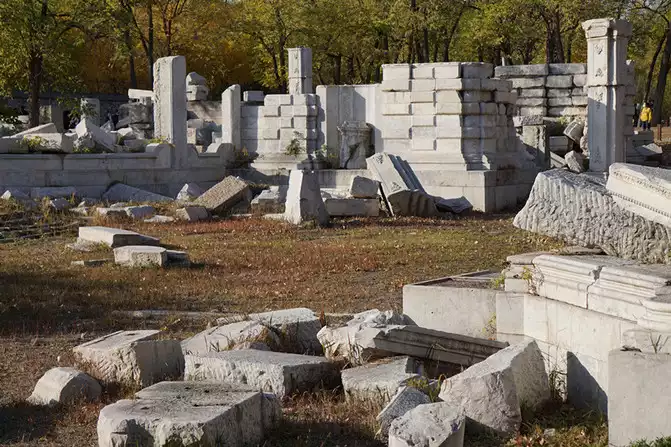
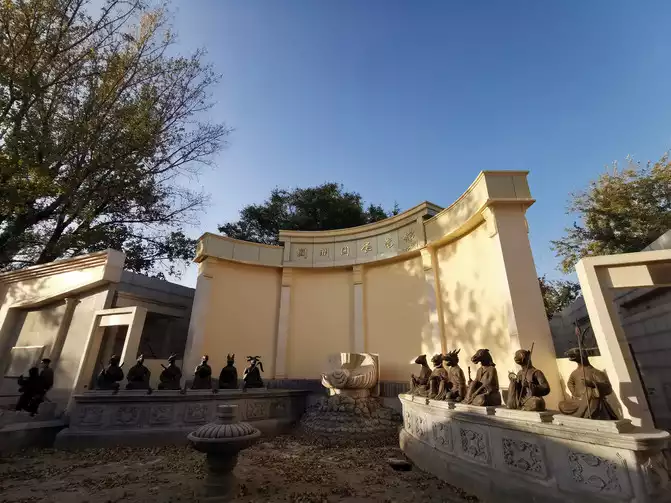
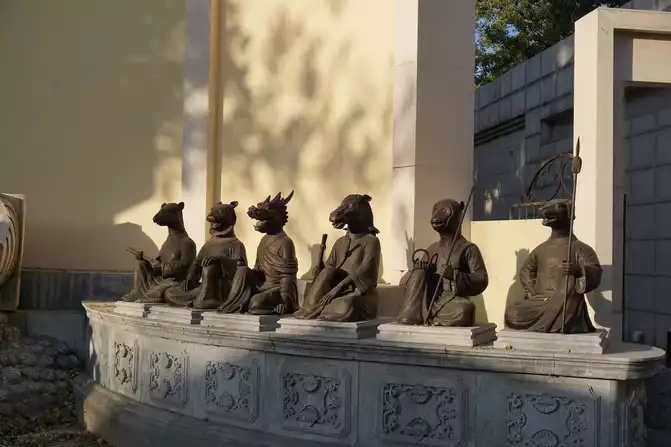
大水法
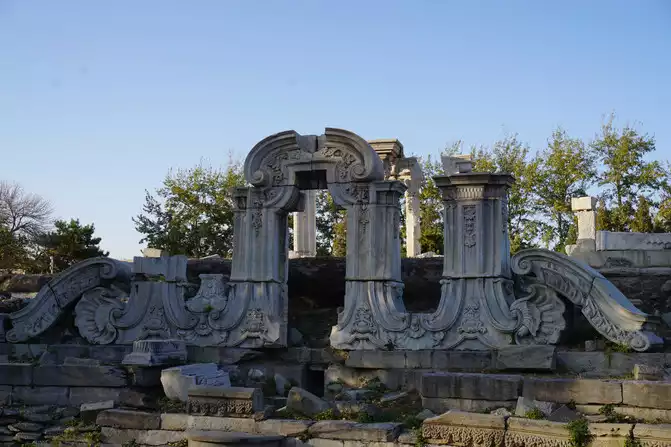
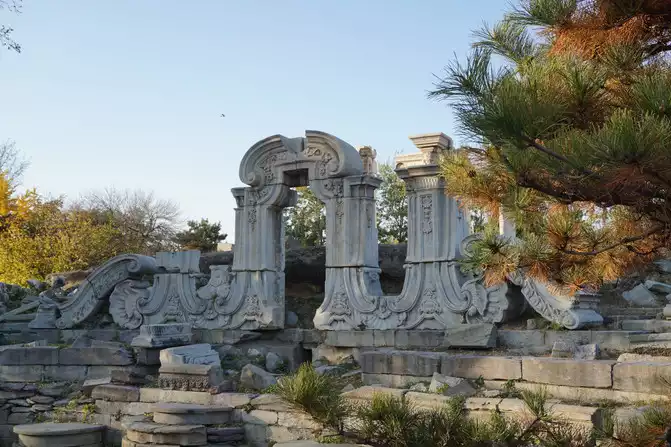
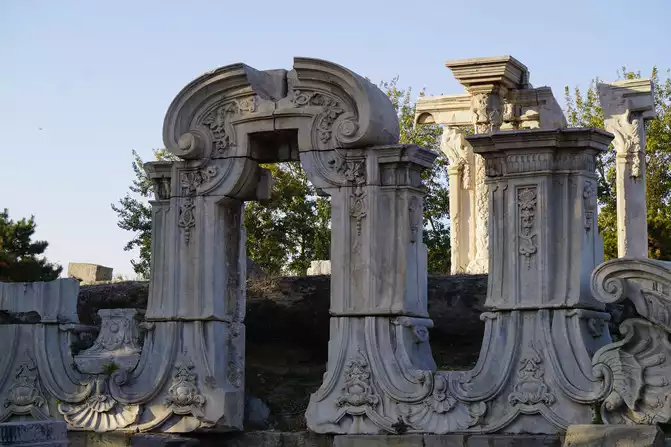
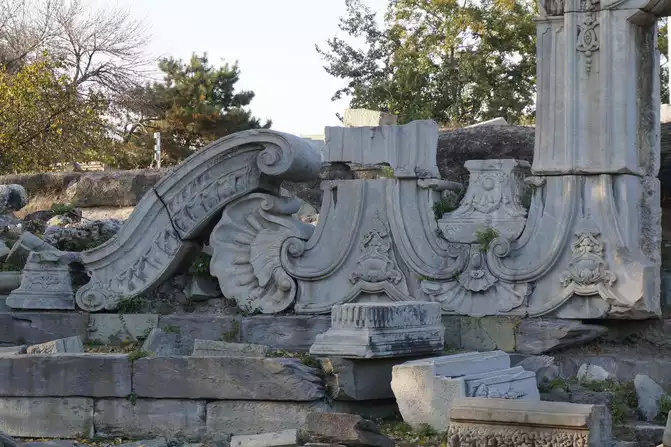
You can get explanations along the way. Of course, it would be good to watch the documentary of the Old Summer Palace before coming
Have dinner in Shichahai in the evening, walked around and bought Zhang Yiyuan jasmine tea
Day 4 [November 2] Wangfujing Heping Fruit Bureau - Hamleys Toy Store - Bubble Mart Store ——Lego Toy Store
We are going back to Kazakhstan in the afternoon, so we won’t arrange any attractions in the morning, just go shopping.
This “Old Beijing City” in the Wangfujing Department Store, with its large green brick narrow alleys, honeycomb briquettes, small horses, green trains, large theaters, photo studios, and advertising paintings from the last century... a strong sense of the times comes to your face.
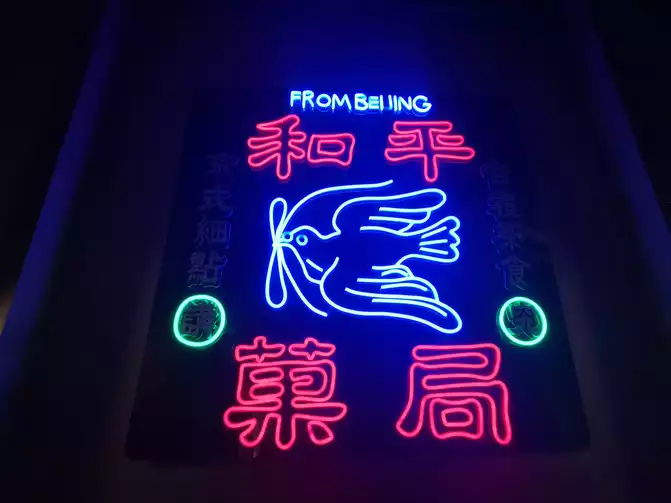
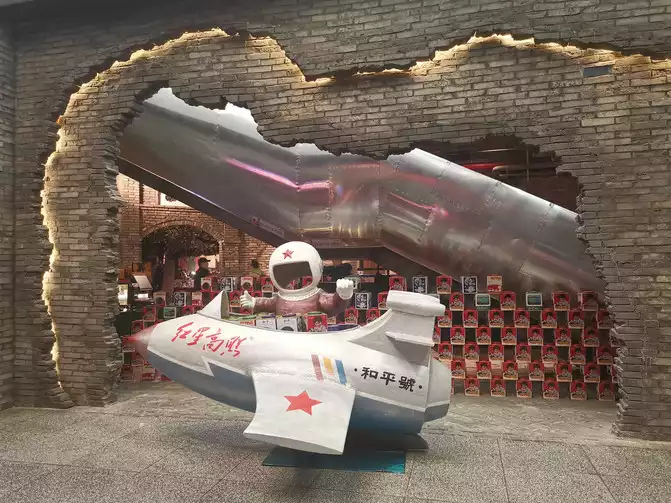
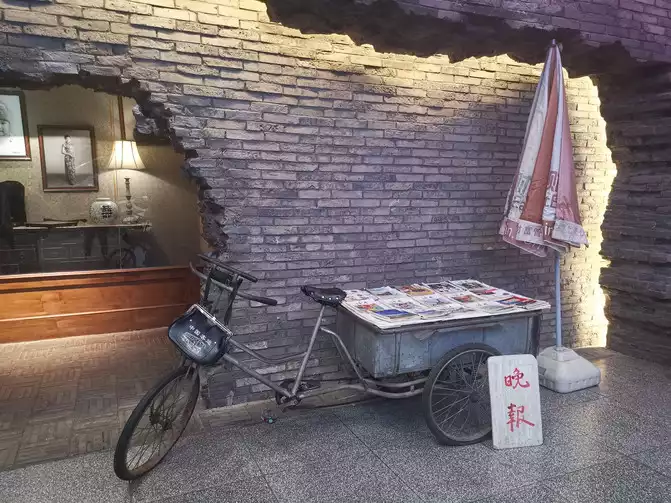
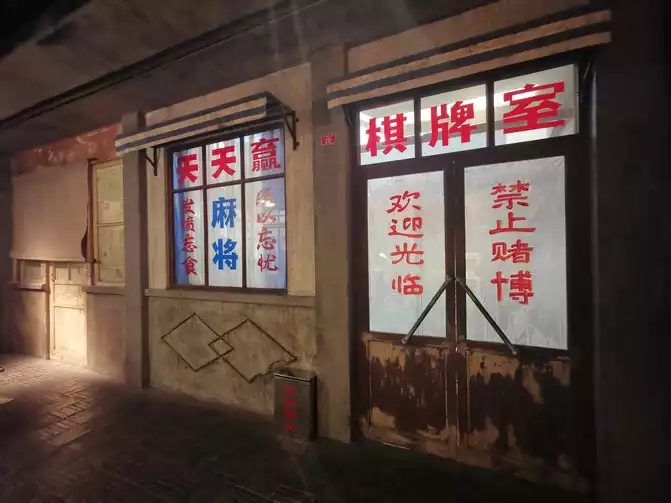
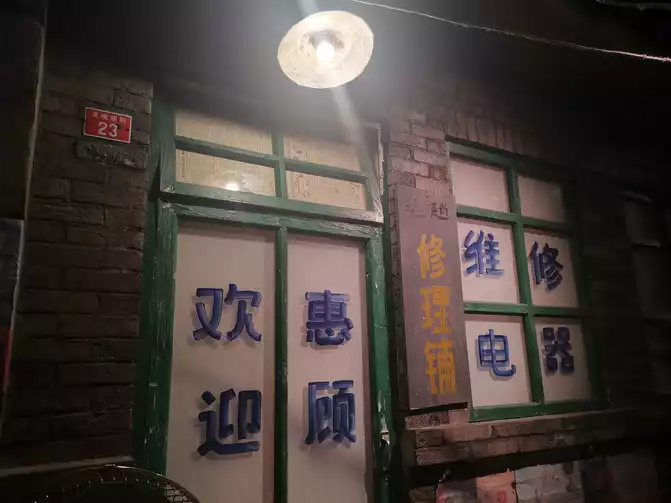
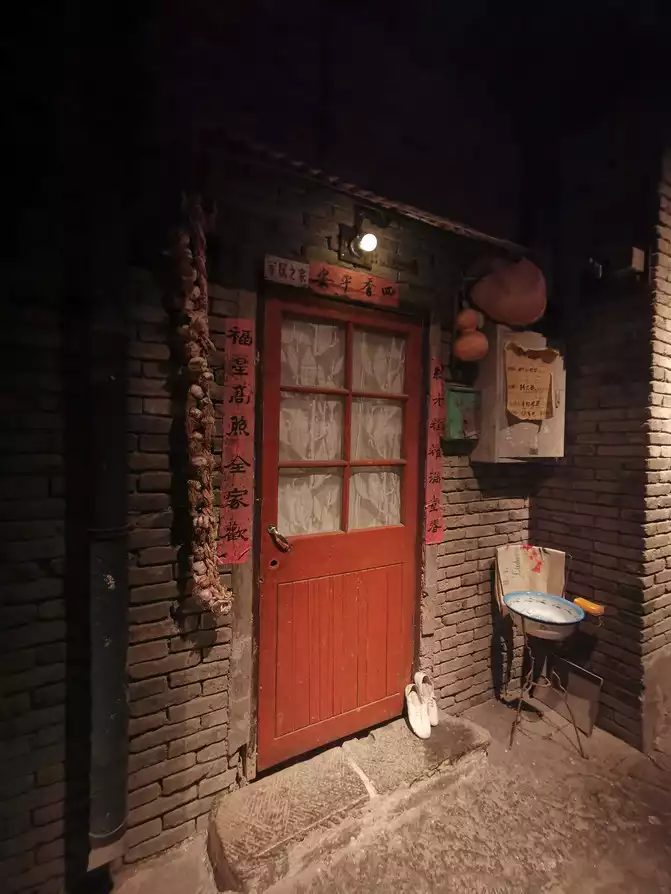
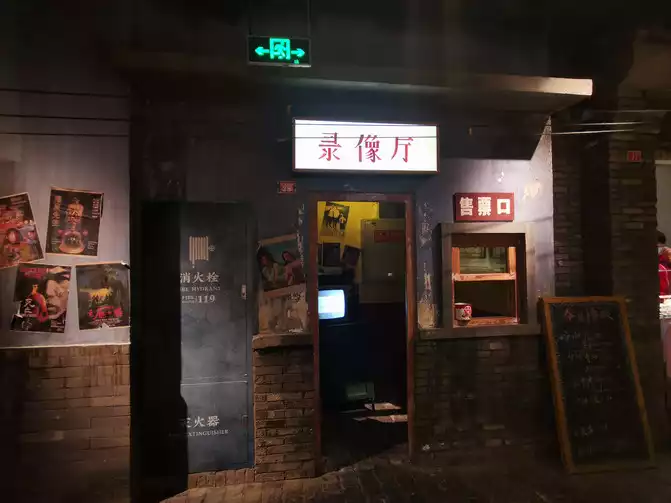
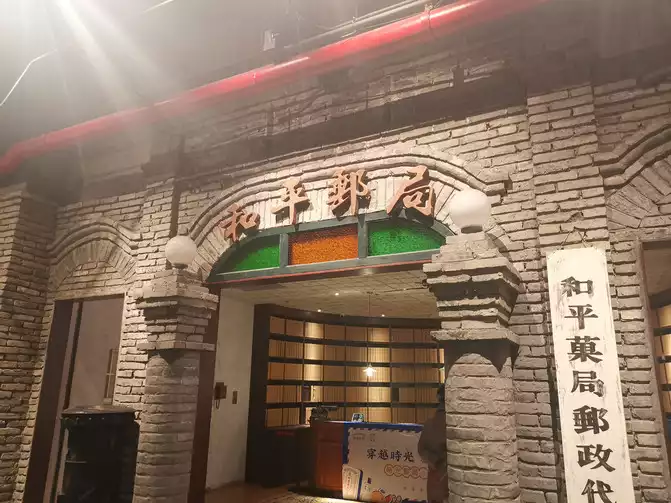
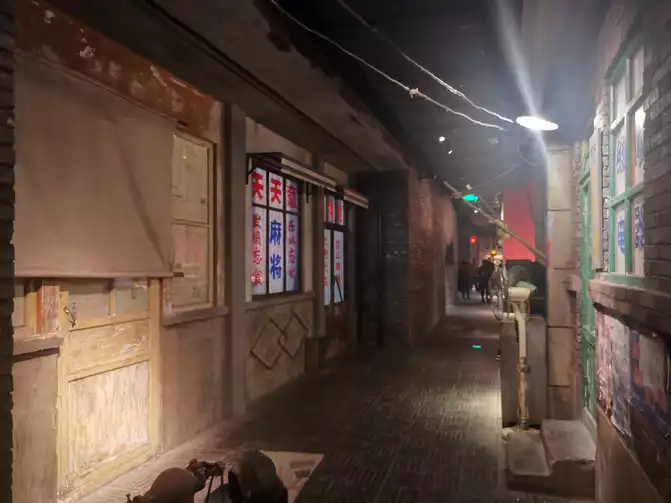
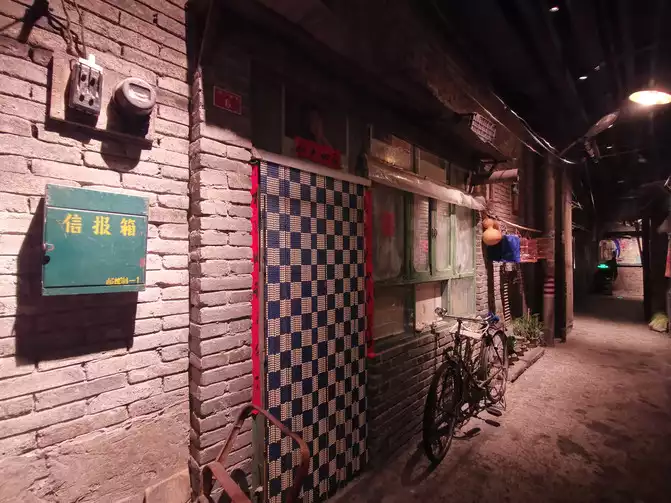
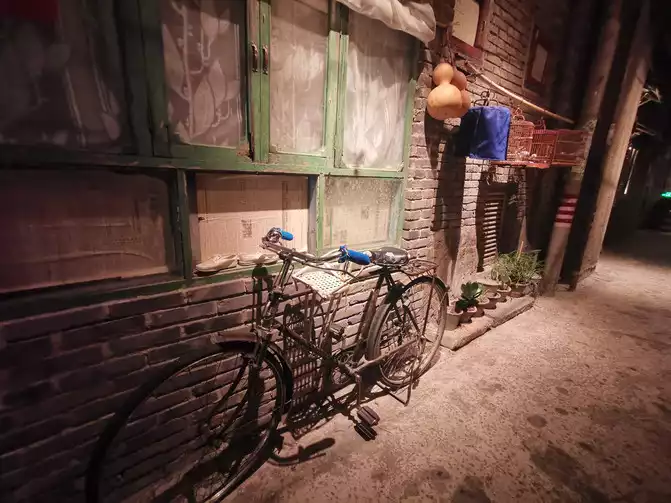
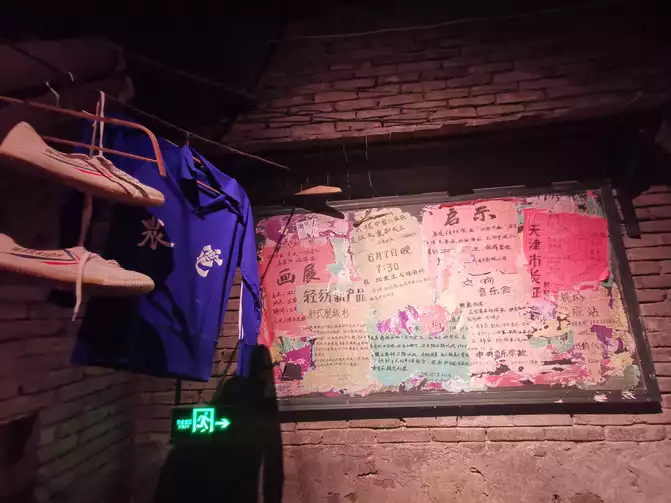
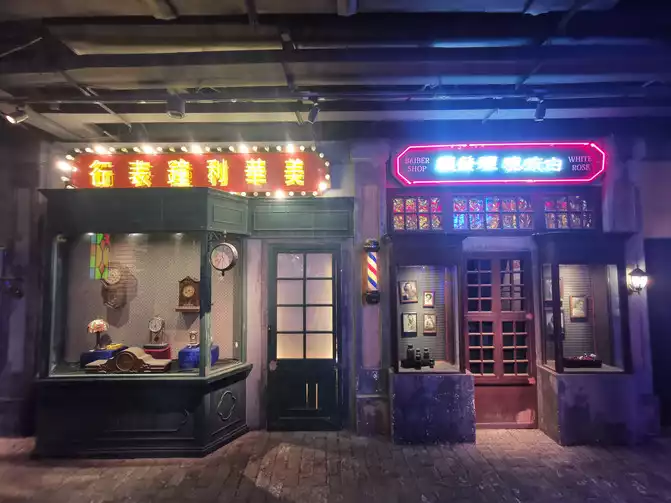
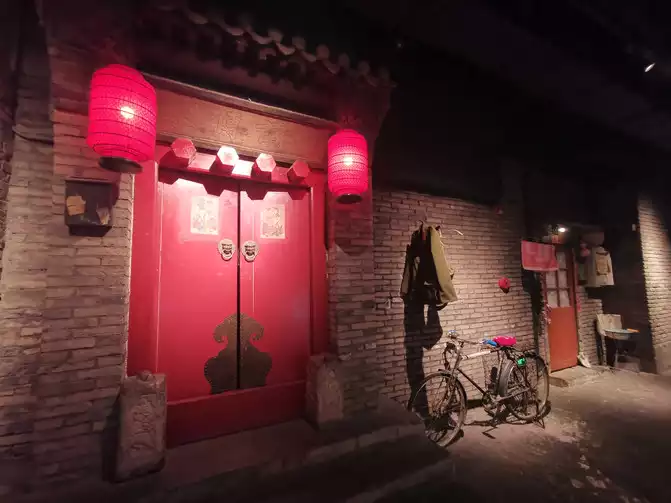
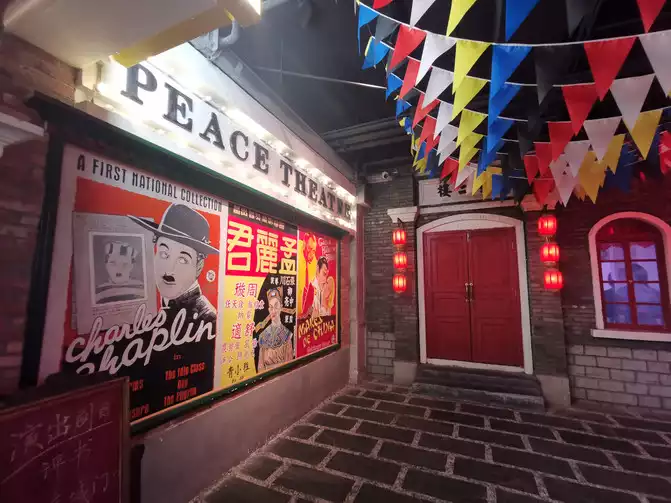
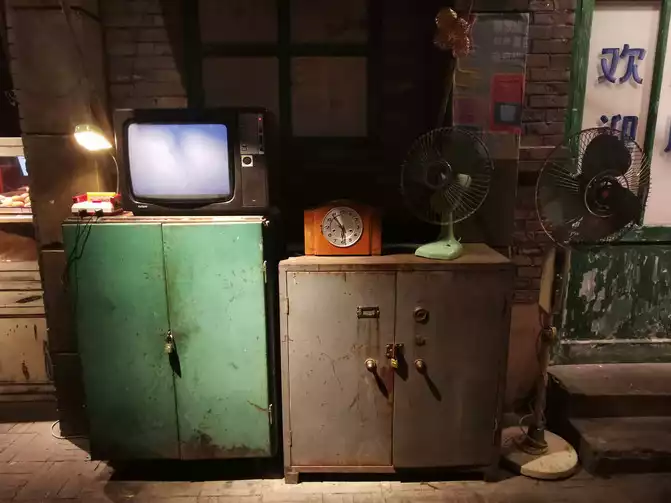
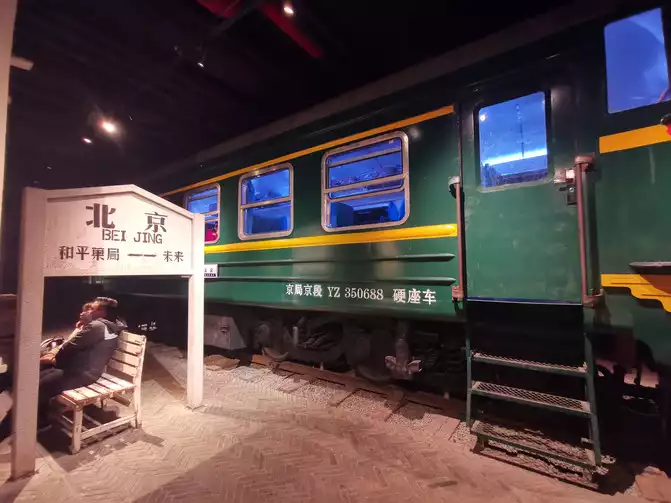
Hamleys is the oldest toy store in the UK. It was founded in 1760 and has a history of more than 250 years. Now it has finally "settled" in Beijing
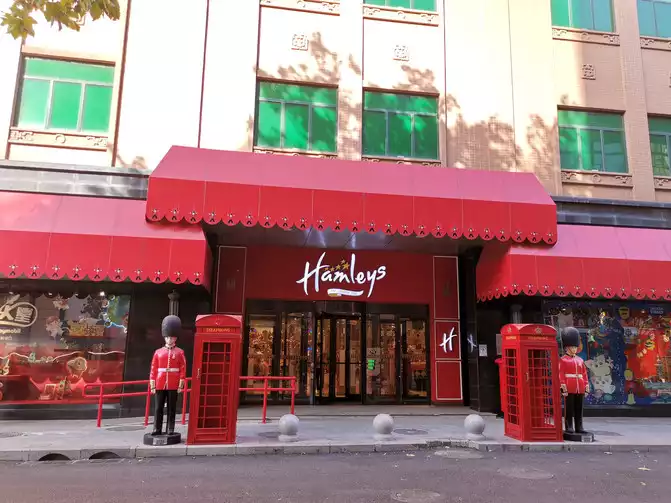
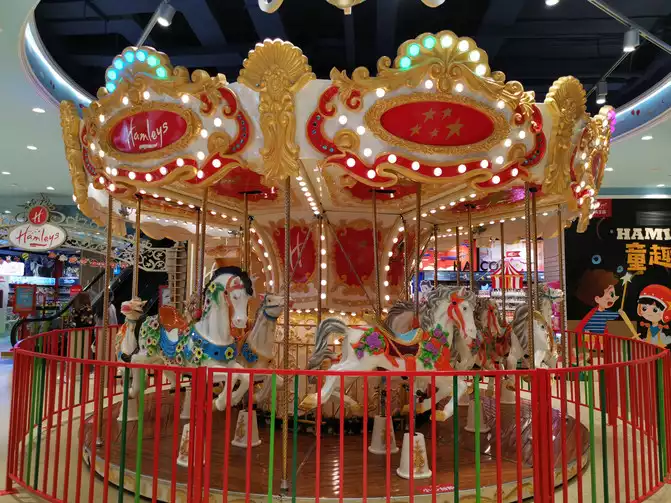
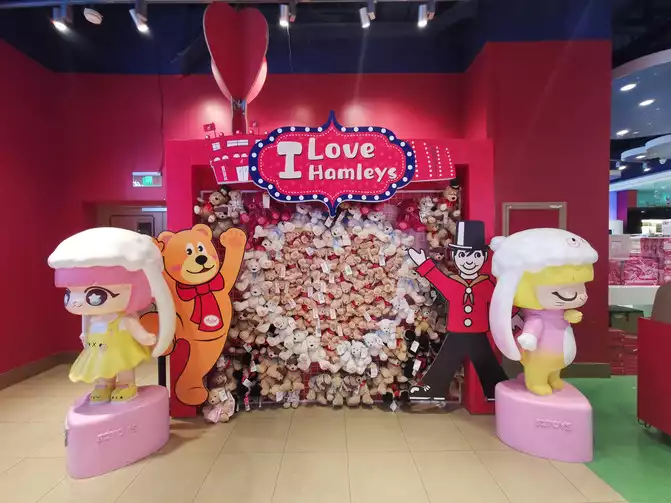
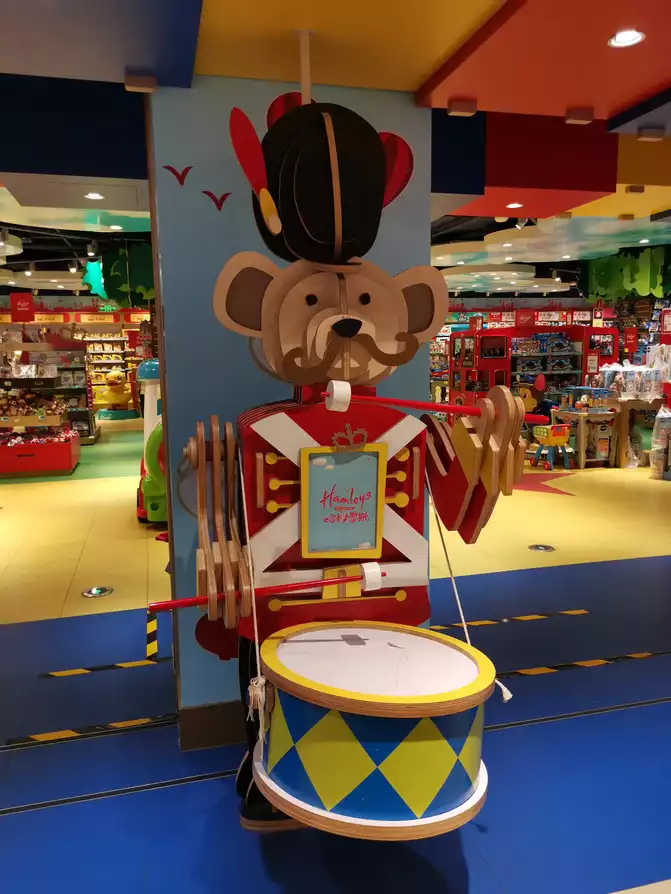
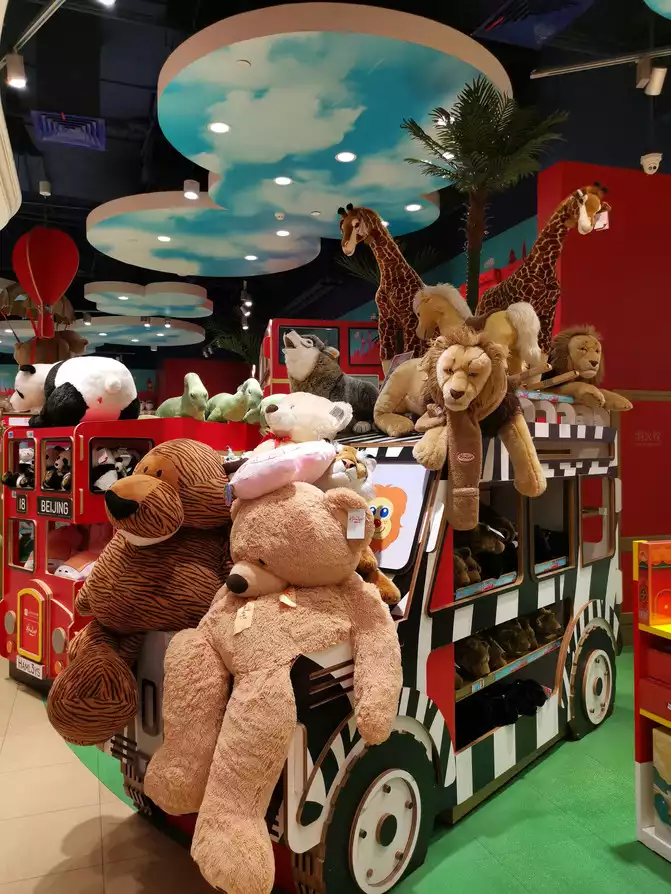
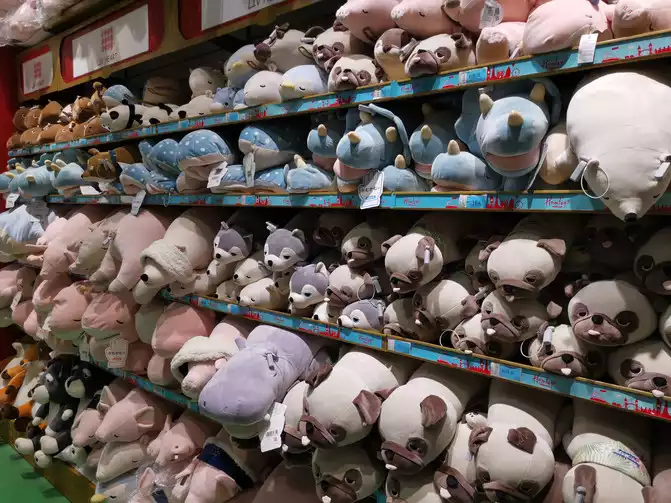
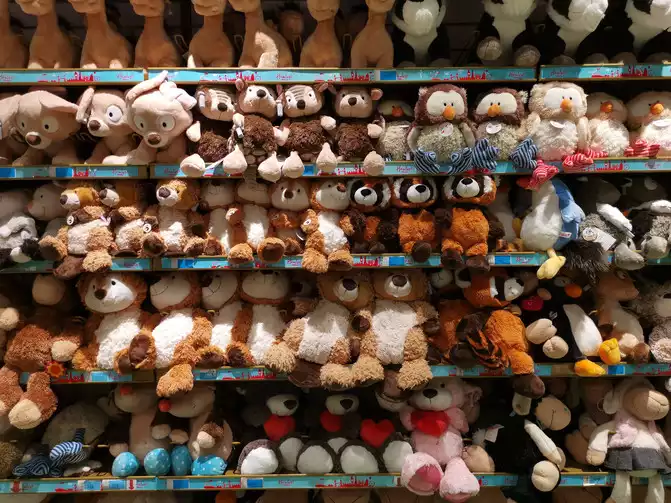
I checked into the Beijing Bubble Mart store and picked out 2 blind boxes. Beijing didn’t make me feel more European at all
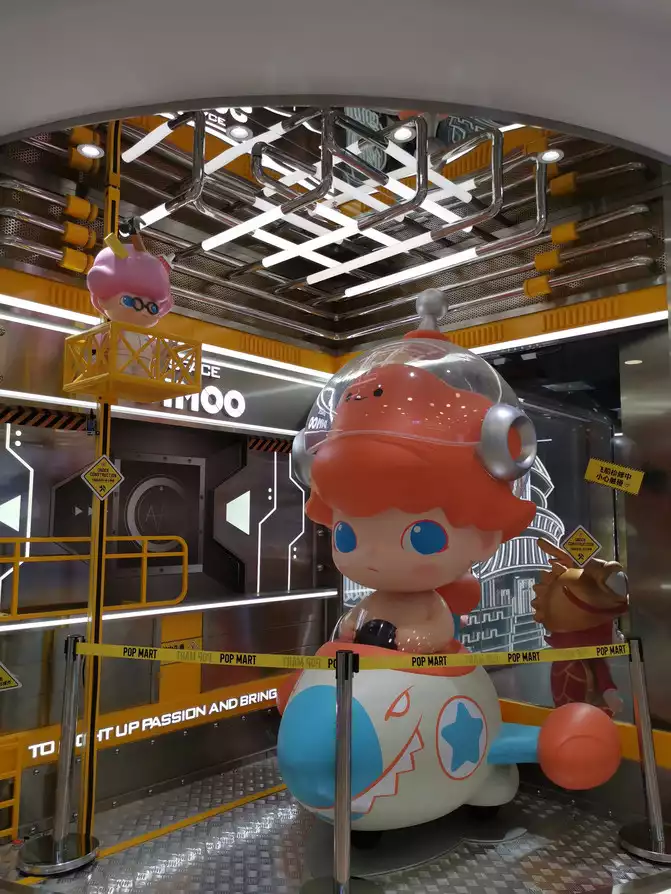
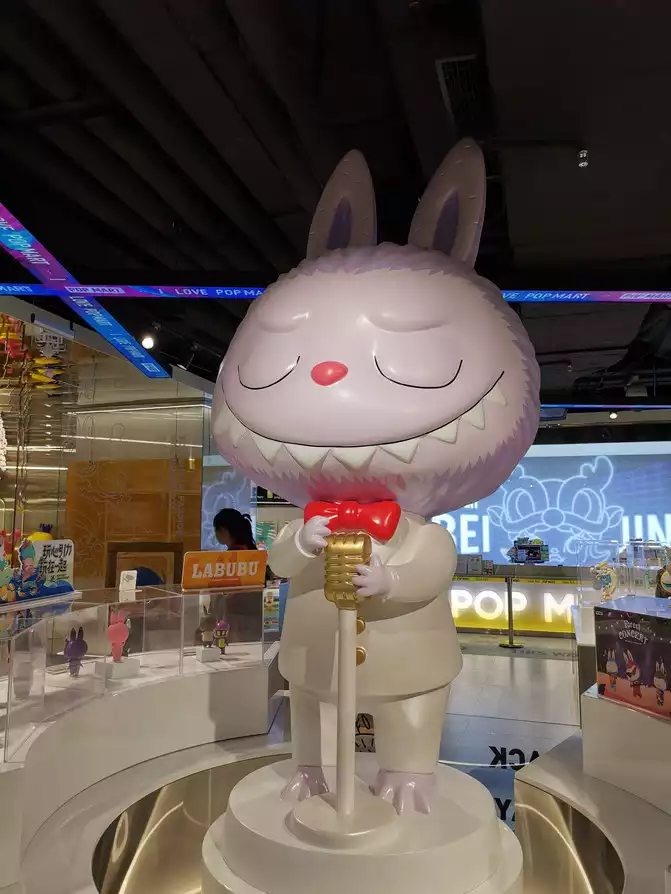
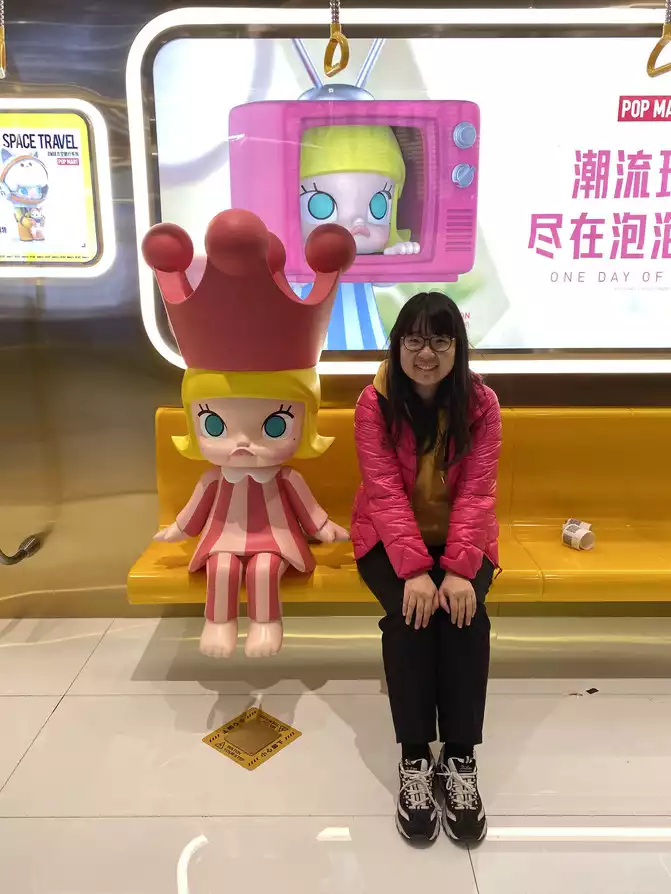

I found a Lego store nearby and saw Harry Potter Castle
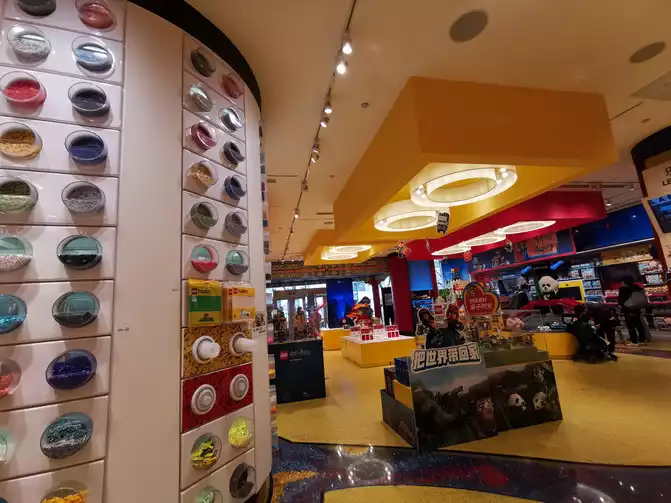
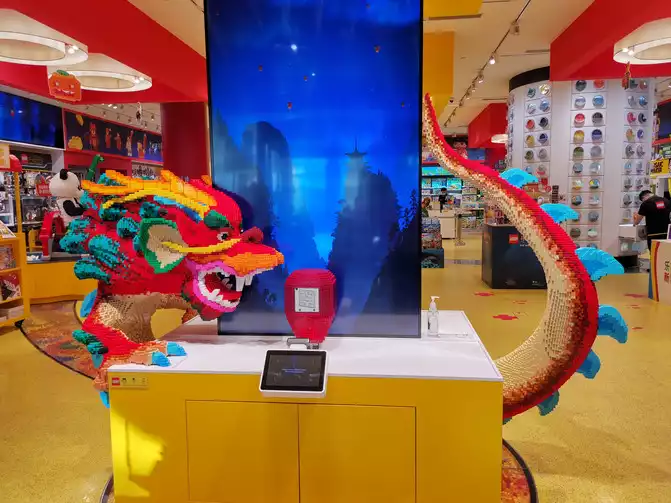
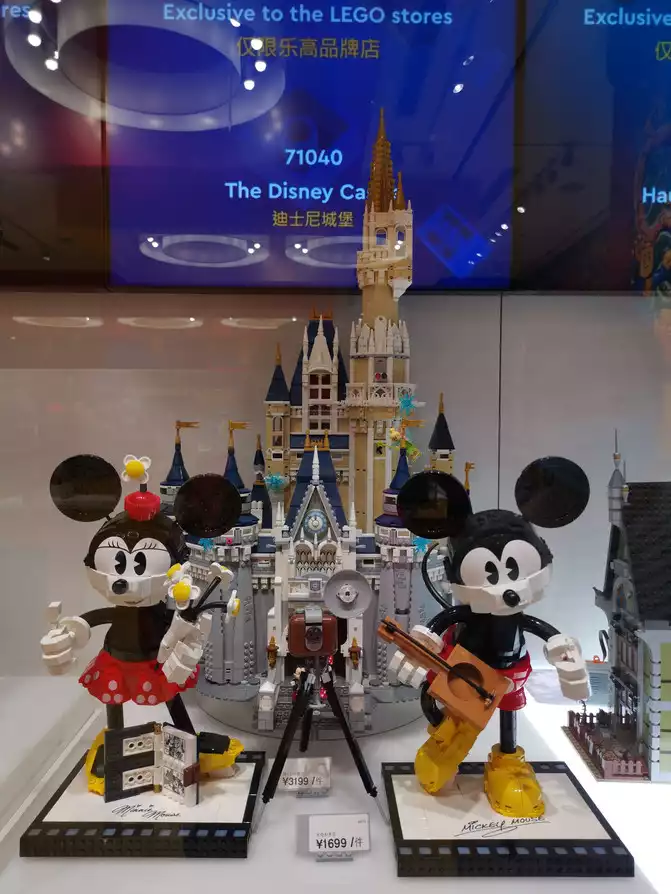
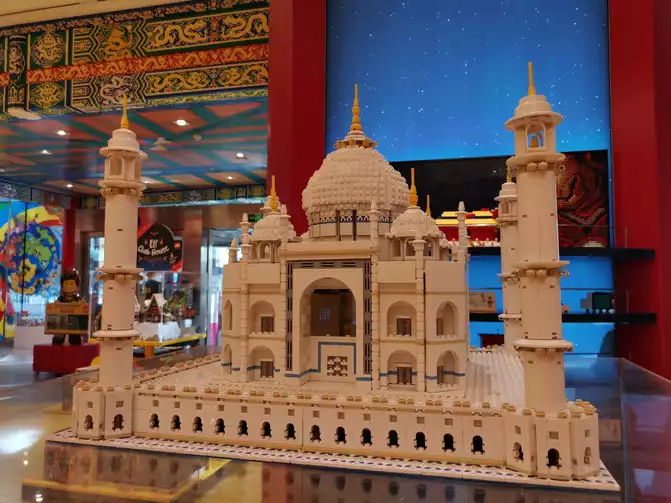
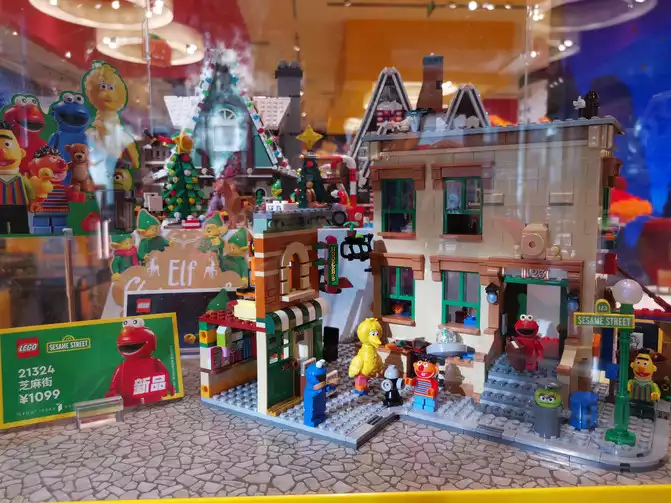
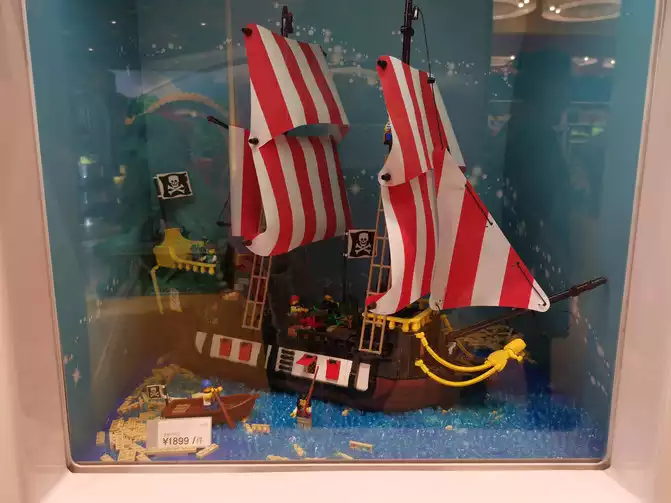
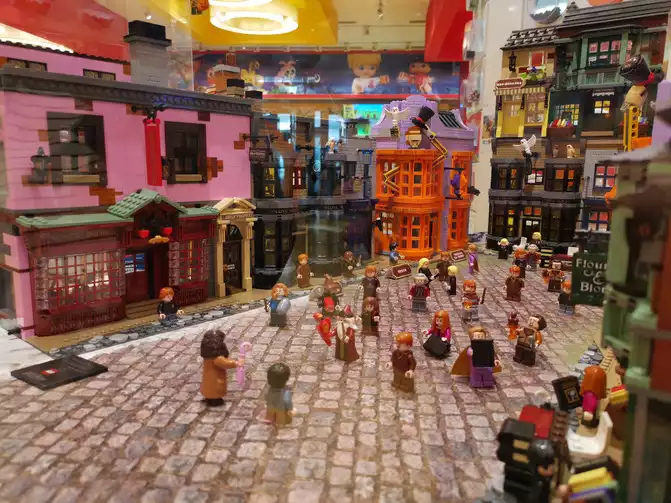
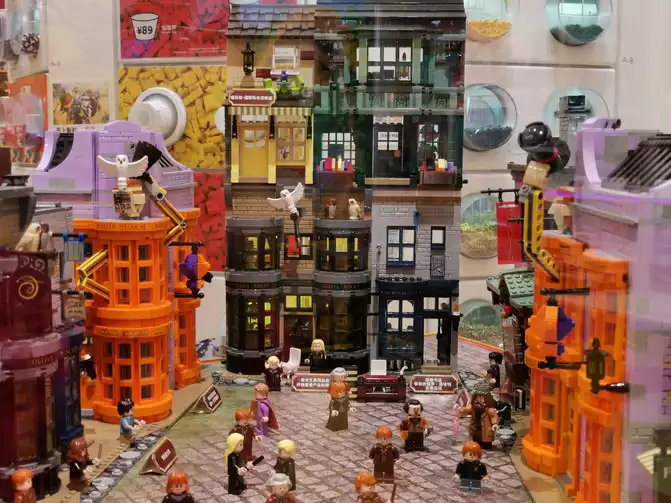
Flying at Daxing Airport in the afternoon, I finally saw the legendary Daxing Airport. There is an intercity service (35 yuan) in the city that goes directly to the airport, which is very convenient
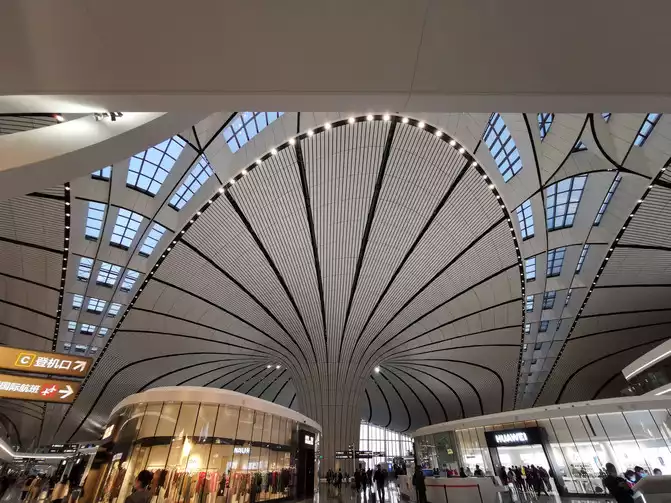
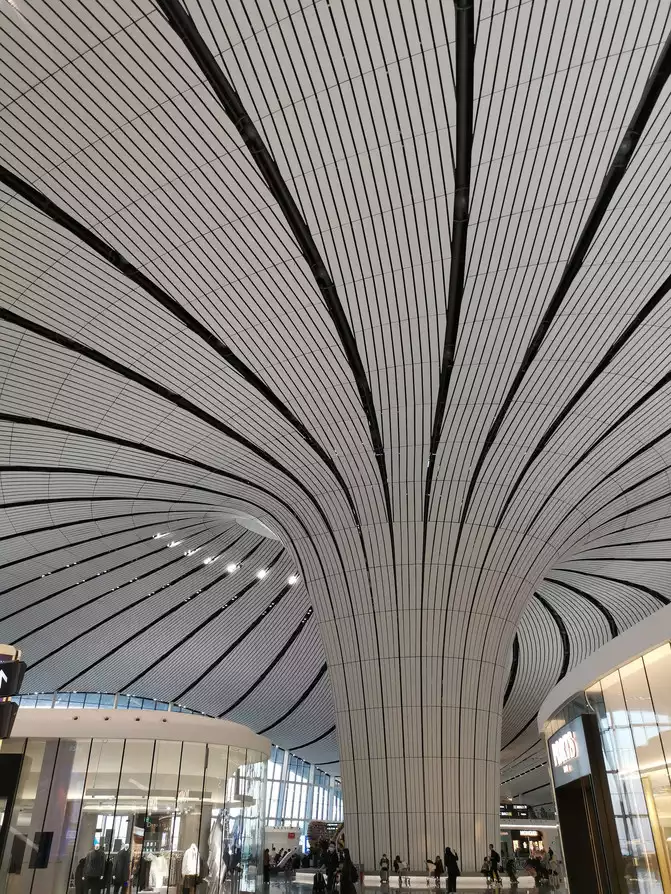
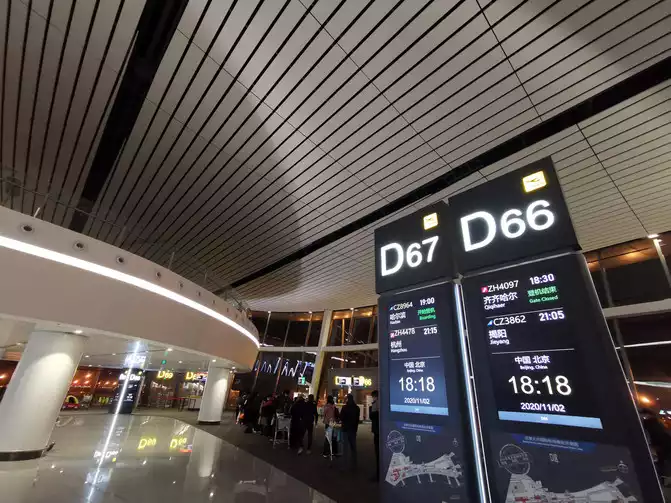
Beijing is a city I want to visit again and again. Universal Studios opens next year, so I must make arrangements~
Number of days: 1 day, Average cost: 360 yuan, Updated: 2020.08.23
Number of days: 1 day, Average cost: 70 yuan, Updated: 2021.06.19
Number of days:5 days, Average cost: 1360 yuan, Updated: 2020.08.18
Number of days: 1 day, Average cost: 200 yuan,
Number of days: 2 days, Average cost: 800 yuan,
Number of days: 1 day, Average cost: 300 yuan,